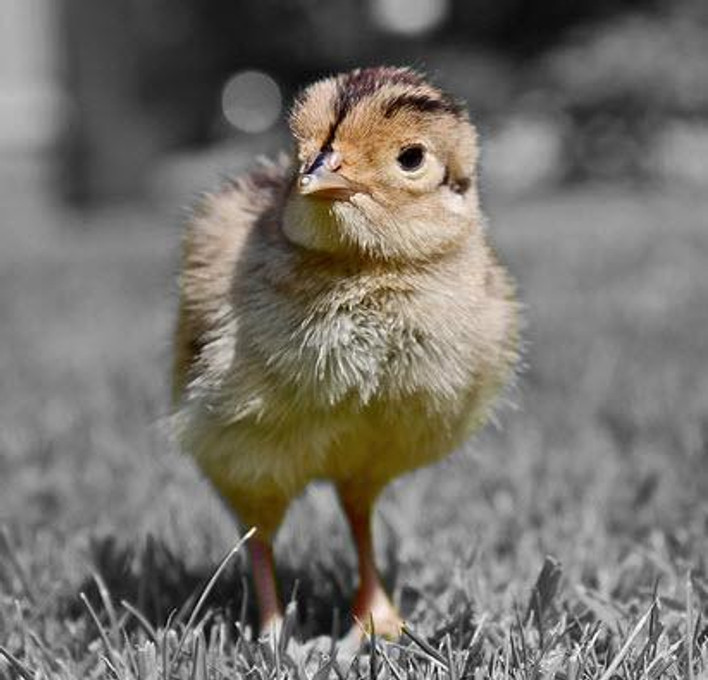
How to Raise Baby Pheasant, Chukar & Quail
Posted by Grange Co-op on 31st Aug 2015
 Baby Pheasants, Chukar, and Quail require a brooder temperature of approximately 95 degrees for the first week, dropping approximately 5 degrees every 3 days or so until the end of the brooding period. They will feather out quickly, so they do not require as much heat as chickens and turkeys. Watch them closely to see if they are comfortable: if they cluster under the lamp, they are too cold; if they stay far away, drop their wings and pant, they are too hot; and if they range all over the brooder, they are comfortable. Make sure they always have enough space to get away from the heat. They are usually fairly quiet when they are happy. Lots of peeping means they are either: too cold, too hot or ill. They should be able to go outside by about 4 to 6 weeks. You may want to still give them heat at night if the weather is chilly.
Baby Pheasants, Chukar, and Quail require a brooder temperature of approximately 95 degrees for the first week, dropping approximately 5 degrees every 3 days or so until the end of the brooding period. They will feather out quickly, so they do not require as much heat as chickens and turkeys. Watch them closely to see if they are comfortable: if they cluster under the lamp, they are too cold; if they stay far away, drop their wings and pant, they are too hot; and if they range all over the brooder, they are comfortable. Make sure they always have enough space to get away from the heat. They are usually fairly quiet when they are happy. Lots of peeping means they are either: too cold, too hot or ill. They should be able to go outside by about 4 to 6 weeks. You may want to still give them heat at night if the weather is chilly.
Pheasants, Chukar, and Quail require a 28% protein starter feed. In conventional feeds, Grange Co-op offers Purina® Gamebird & Turkey Startena® ( 1718485). Grind their feed fine in a blender for the first week or so, as the crumbles can be too large for them to pick up with their little beaks. Feed them a starter feed for approximately 6-8 weeks, then gradually change over to a 16% to 17% protein all-purpose ration. Grange Co-op offers Rogue All-In-One (25AIO-50AIO). After the first couple of weeks, you can sprinkle a little chick grit on their feed.
If you're planning on feeding organic, begin with Rogue Nature's Harmony Certified Organic Chick Starter ( 10OCS-40OCS). As this is a 21% protein feed, you can continue using this organic feed for the first 3-4 months. Again, after the first couple of weeks, you can sprinkle a little chick grit on their feed.
Never give Pheasants, Chukar or Quail cold water, or they may become chilled and die. Use lukewarm water, and it is a good idea to put a vitamin and electrolyte supplement in the water. Quail are strong fliers, so the brooder should be covered after they reach approximately one week of age. They will fly up when startled, so the cover should not be wire, but something soft, like window screen or netting. If wire is used, they will often scalp themselves or even break their necks.
Pheasants have a tendency to be cannibalistic, and if picking is not stopped quickly, you may lose them. Bloody feathers and toes are especially enticing to them. Putting leafy alfalfa hay in the bottom of the brooder will discourage toe picking and give them something to do. Using red or blue heat lamps also helps. You can also clip just the tip of the beak off to keep them from getting a good grip. Crowding and lack of cover to hide seem to exacerbate this problem. Picking is very difficult to discourage in Ringnecks, but is much less of a problem with ornamentals like the Goldens.
